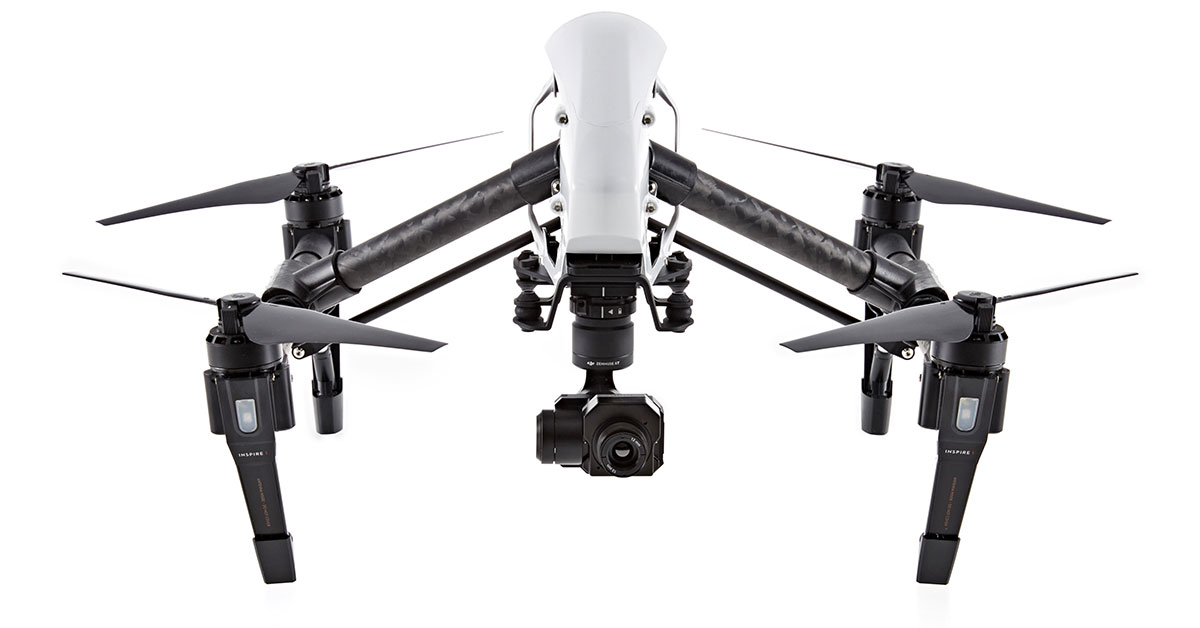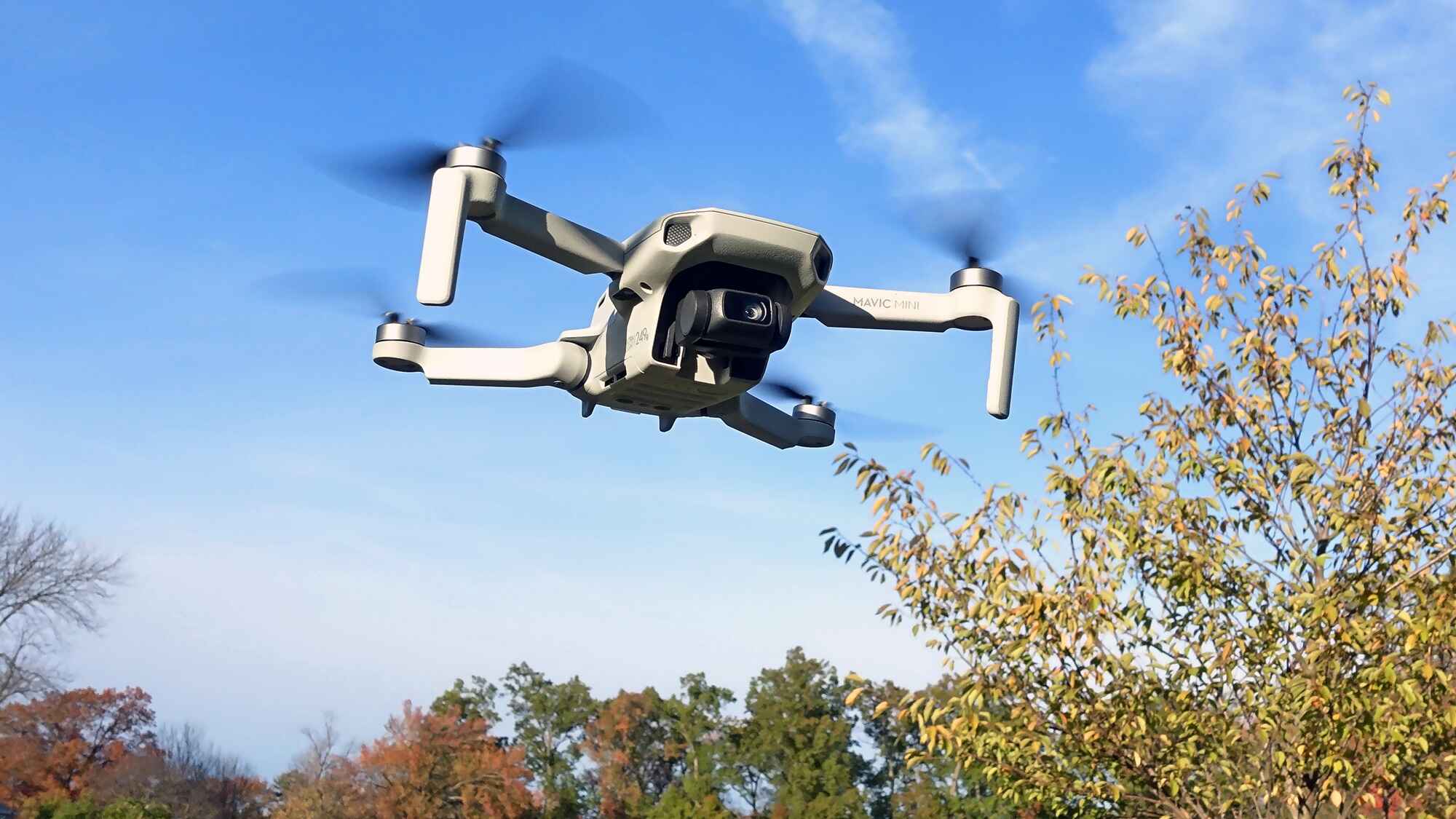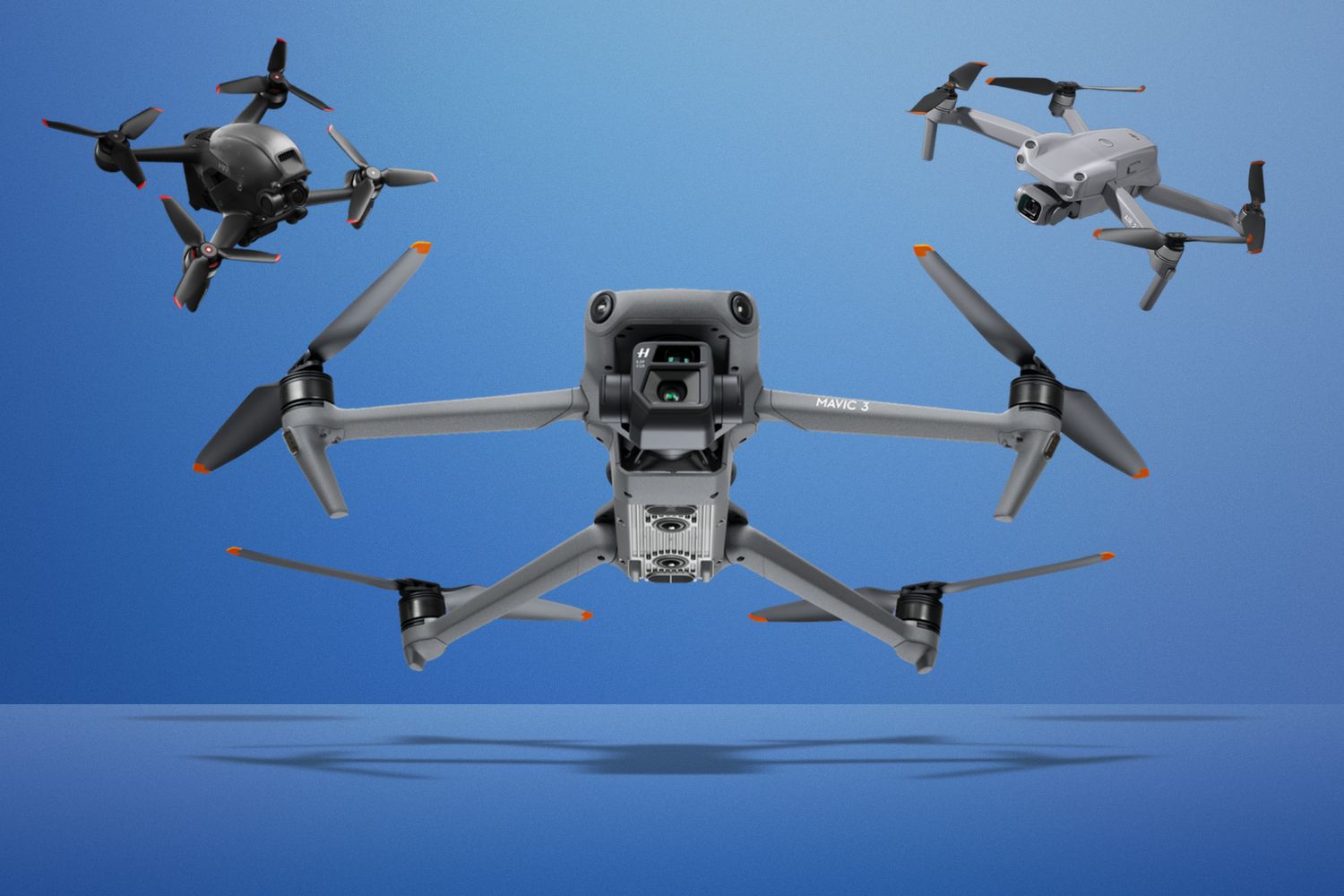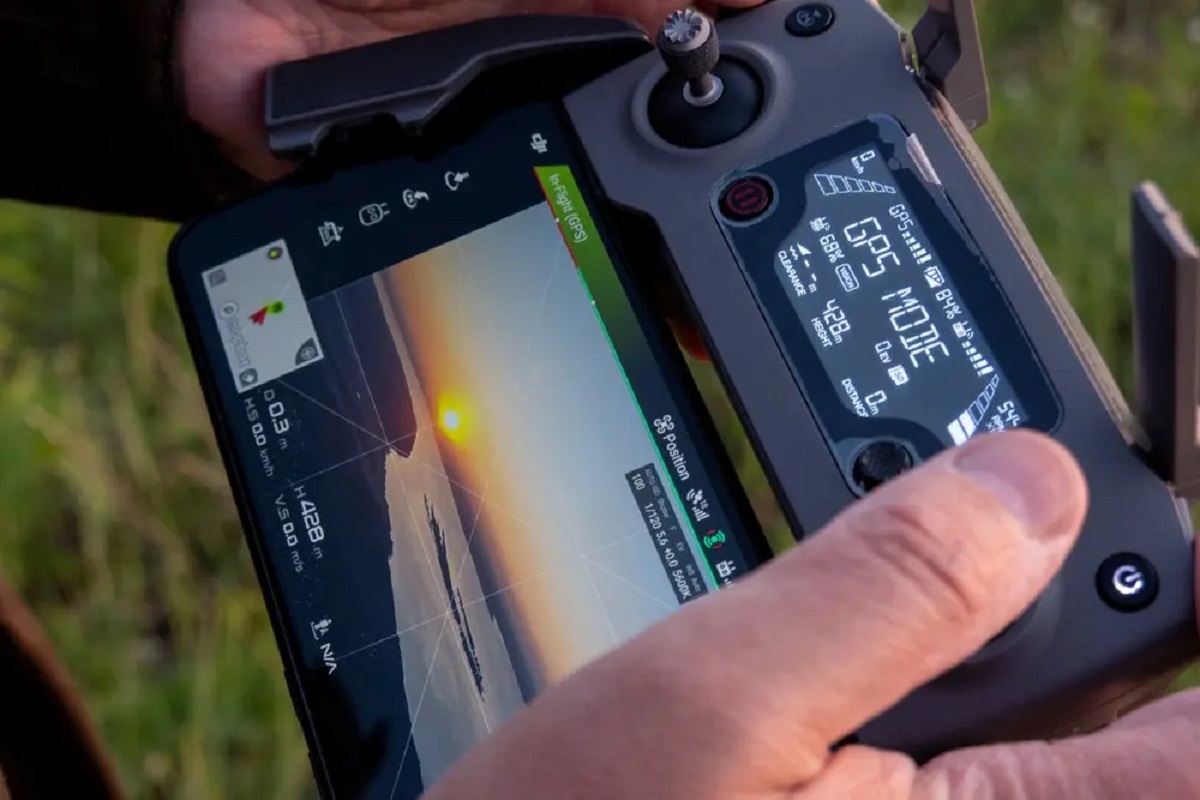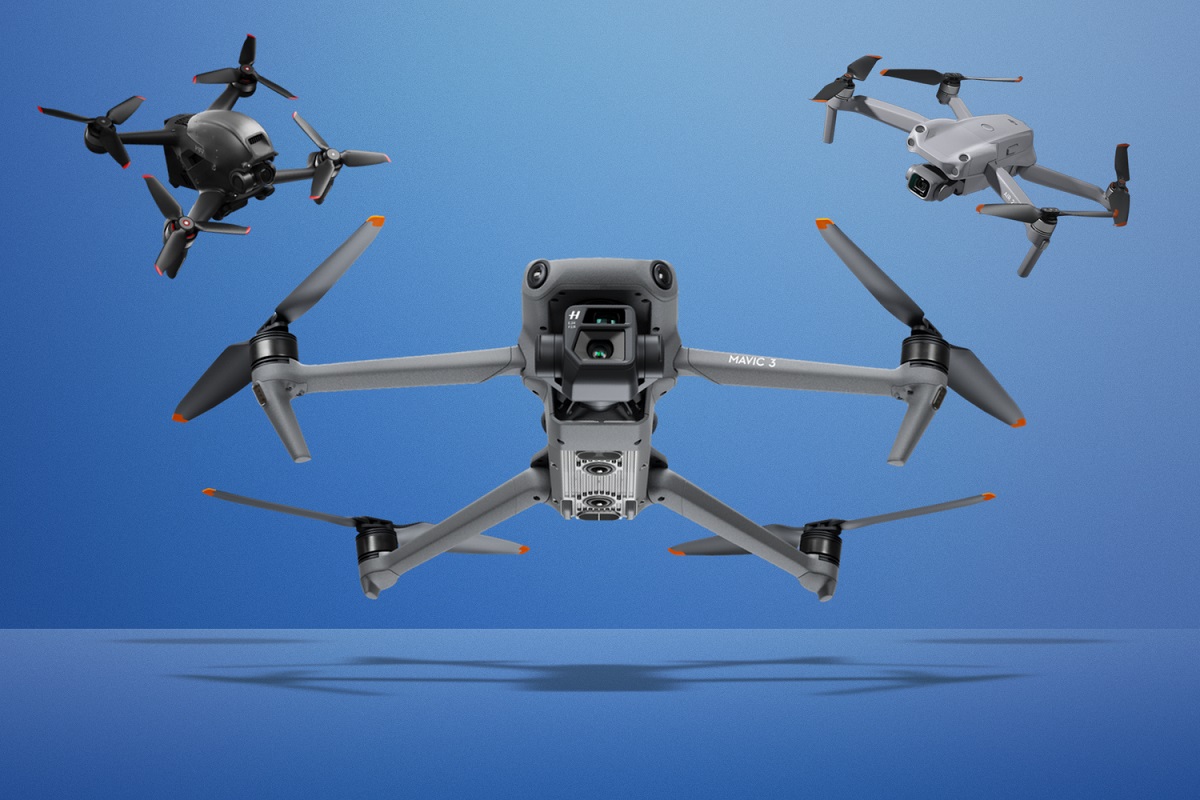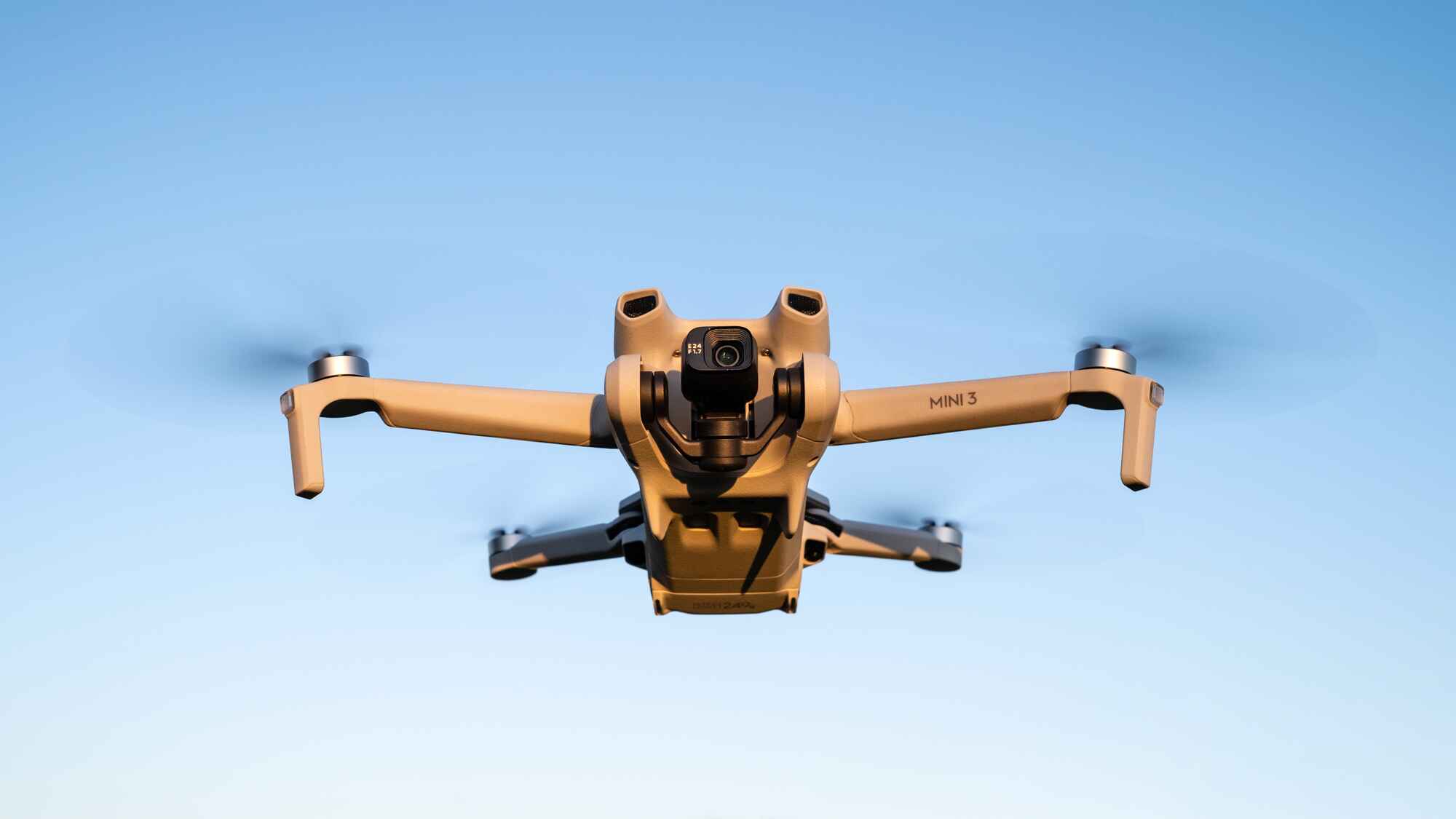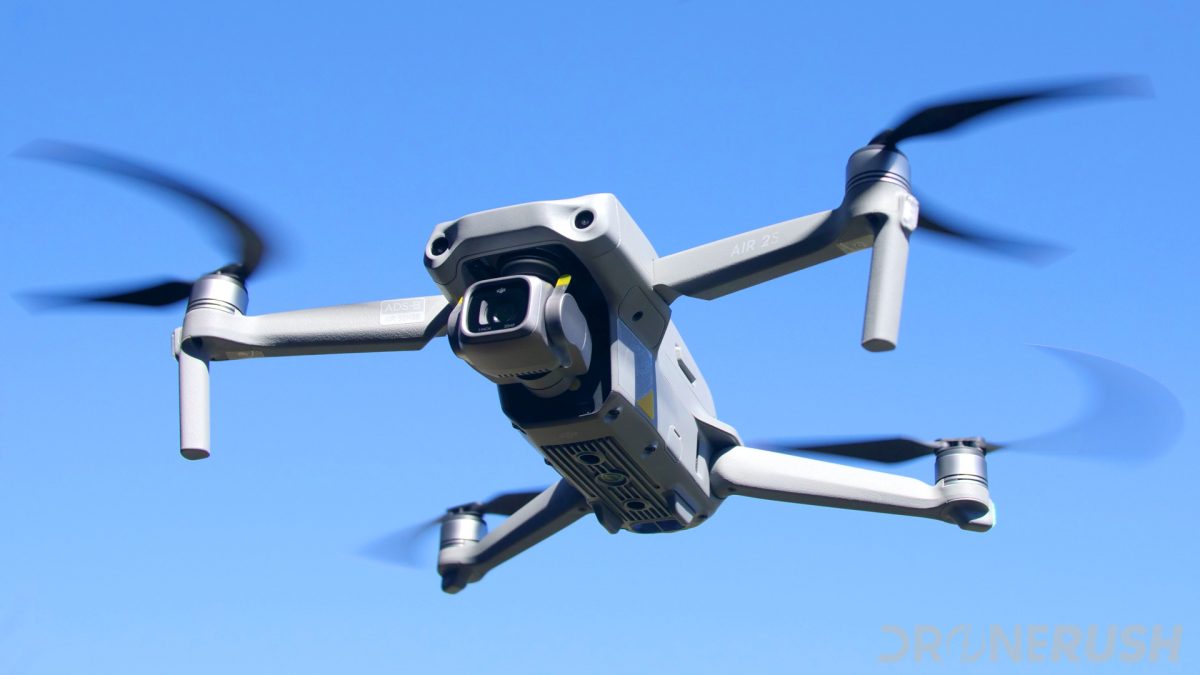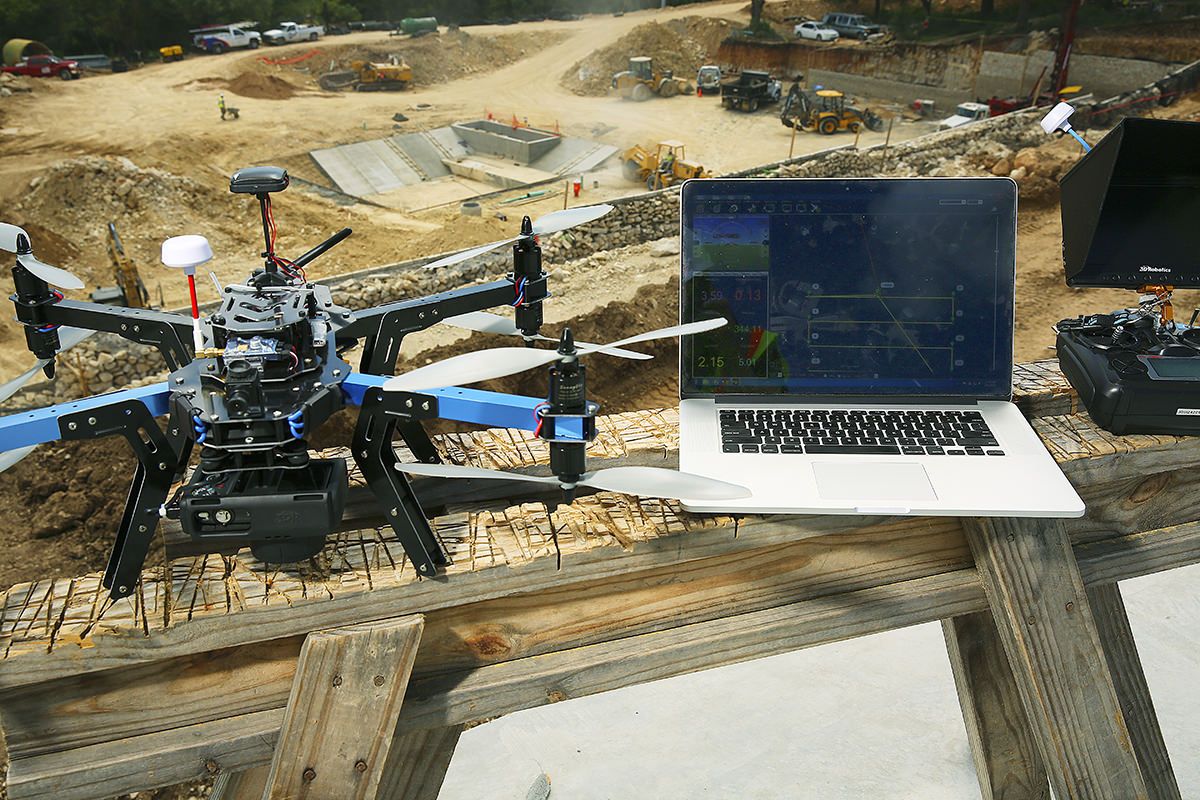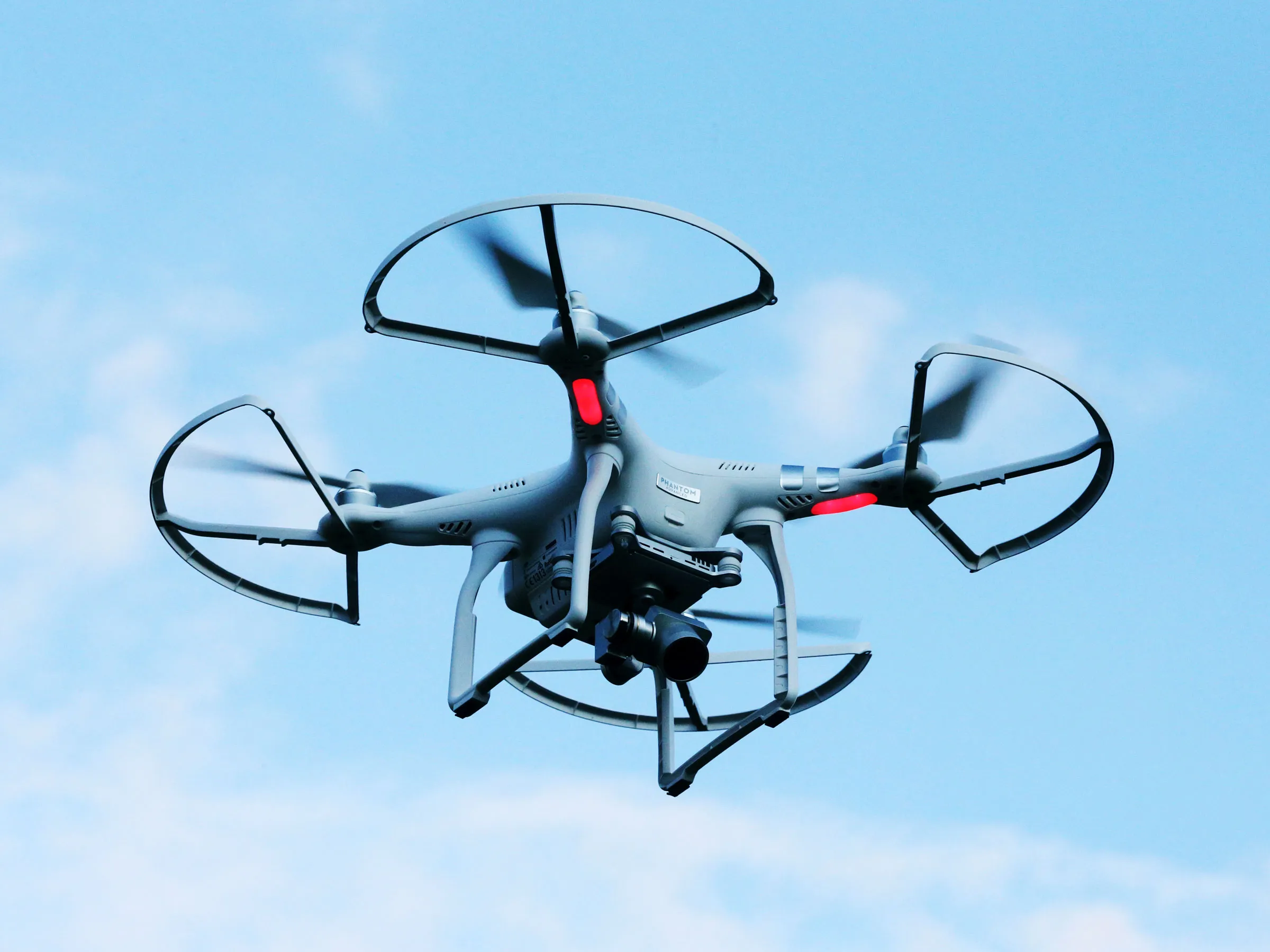Introduction
Thermal imaging has revolutionized various industries by providing a new level of insight and analysis in the form of heat signatures. As technology continues to evolve, drones equipped with thermal imaging capabilities have become indispensable tools in fields like search and rescue, wildlife monitoring, building inspections, and more. DJI, a leading manufacturer of drones, has been at the forefront of this innovation, offering a range of models that feature thermal imaging capabilities.
Thermal imaging utilizes infrared technology to detect and capture images based on the heat signatures emitted by objects and living beings. This technology allows users to visualize temperature differences, making it ideal for identifying anomalies, detecting hidden or obscured objects, and monitoring thermal patterns. By integrating thermal imaging capabilities into their drones, DJI has opened up a whole new world of possibilities for professionals in various industries.
With the ability to rapidly cover large areas, drones equipped with thermal imaging cameras significantly improve efficiency and reduce risks. They can capture thermal data from inaccessible or hazardous locations, enabling professionals to assess situations from a safe distance. This allows for more accurate decision-making, timely response, and enhanced situational awareness.
In this article, we will explore the DJI drones that feature thermal imaging capabilities and their applications in different industries. Whether you are a professional seeking to integrate thermal imaging into your workflow or a drone enthusiast curious about the latest advancements, this article will provide insights into the DJI drones with thermal imaging technology.
What is Thermal Imaging?
Thermal imaging is a technology that allows us to visualize heat, which is otherwise invisible to the naked eye. It works by capturing the infrared radiation emitted by objects and converting it into a visible image. Every object, whether living or non-living, emits heat in the form of infrared energy. By detecting and analyzing this energy, thermal imaging cameras can create a visual representation of temperature variations.
Thermal imaging technology operates in the long-wave infrared spectrum, typically between 8 and 14 micrometers. The camera sensor detects the emitted radiation and assigns different colors or shades to represent different temperature ranges, creating a thermal image or thermogram.
Thermal imaging is based on the principle that all objects emit heat energy in proportion to their temperature. By capturing and analyzing this energy, thermal imaging cameras can reveal valuable information about the thermal characteristics of objects and environments.
One of the key advantages of thermal imaging is its ability to capture data in complete darkness or low-light conditions. Unlike visible light, which can be obscured by smoke, fog, or darkness, thermal energy is not affected by such obstacles. This makes thermal imaging cameras extremely useful in scenarios where visibility is compromised.
Thermal imaging has found applications in a wide range of industries, including but not limited to:
- Electrical Inspections: Thermal imaging cameras can quickly identify electrical hotspots, helping prevent equipment failure and fire hazards.
- Search and Rescue: Thermal imaging allows rescue teams to locate missing persons in low visibility conditions by detecting their body heat.
- Building Inspections: Thermal cameras can identify building defects, heat leaks, and energy inefficiencies by visualizing temperature differences.
- Wildlife Monitoring: Thermal imaging helps conservationists track and study animal behavior, migration patterns, and population dynamics.
- Farm Management: Thermal cameras enable farmers to assess crop health, detect irrigation issues, and monitor livestock by analyzing temperature variations.
With the advancements in technology and the integration of thermal imaging capabilities into drones, these applications have become even more accessible and efficient. DJI, a renowned drone manufacturer, has recognized the potential of thermal imaging and has incorporated this feature into some of their most cutting-edge drone models, allowing professionals in various industries to leverage this powerful technology.
Why is Thermal Imaging useful for drones?
Thermal imaging has proven to be an invaluable tool for drones, enhancing their capabilities and expanding their applications across numerous industries. Here are some reasons why thermal imaging is incredibly useful for drones:
1. Enhanced Visibility: Thermal cameras mounted on drones can capture heat signatures from a distance, allowing operators to see through darkness, fog, smoke, and other visual obstructions. This enhanced visibility enables search and rescue operations, surveillance missions, and inspections in challenging environments.
2. Efficient Surveying and Mapping: Drones equipped with thermal imaging cameras can quickly and accurately survey large areas by detecting heat patterns. This capability is highly advantageous for agricultural monitoring, land surveying, and environmental studies, providing valuable insights into crop health, water usage, and heat dispersion.
3. Rapid Detection of Anomalies: Thermal imaging on drones allows for the swift identification of anomalies that may go unnoticed by traditional visual inspections. By detecting variations in temperature, drones can spot overheating electrical components, energy leaks in buildings, and even locate hidden individuals in search and rescue missions.
4. Increased Safety: Drones equipped with thermal imaging technology can remotely assess hazardous areas, reducing the need for personnel to enter potentially dangerous environments. This not only enhances safety but also helps save on costs associated with personal protective equipment and potential accidents.
5. Wildlife Monitoring and Conservation: Thermal imaging allows for non-invasive observation and tracking of wildlife, eliminating human disturbance and minimizing stress on the animals. Researchers can study animal behavior, identify breeding sites, and monitor population dynamics without interfering with their natural habitats.
6. Energy Efficiency and Building Inspections: Thermal imaging enables the identification of heat leaks, insulation deficiencies, and energy inefficiencies in buildings. By detecting temperature differences on surfaces, drones equipped with thermal cameras can assist in comprehensive building inspections, helping businesses and homeowners save energy and reduce costs.
7. Public Safety and Law Enforcement: Thermal imaging on drones has proven instrumental in law enforcement operations, allowing the detection of heat signatures associated with criminal activities, locating missing persons, and monitoring crowd movements during events or protests.
These are just a few examples of why thermal imaging is a game-changer in the drone industry. By incorporating thermal imaging capabilities, DJI has further expanded the possibilities and applications of their drones, offering professionals in various fields an innovative and highly effective tool for their specific needs.
DJI Matrice Series with Thermal Imaging
The DJI Matrice series is renowned for its exceptional performance and versatility in professional drone applications. When combined with thermal imaging technology, the Matrice series becomes an even more powerful tool for industries such as aerial inspections, public safety, and emergency response. Let’s explore some of the notable models in the DJI Matrice series that come with thermal imaging capabilities:
1. DJI Matrice 300 RTK: The DJI Matrice 300 RTK is a flagship model designed for commercial and industrial applications. It supports a wide range of payloads, including the Zenmuse H20, which features a thermal camera. With a 20MP visual camera, a 12MP wide-angle camera, and a 640×512 thermal camera, the Matrice 300 RTK provides comprehensive aerial data collection capabilities. This makes it an ideal choice for infrastructure inspections, search and rescue missions, and public safety operations.
2. DJI Matrice 210 RTK V2: The DJI Matrice 210 RTK V2 is a rugged and versatile drone designed for high-performance tasks. It features an industry-leading flight time and supports various payloads, including the Zenmuse XT2 thermal camera. Equipped with FLIR thermal imaging technology, the Zenmuse XT2 offers dual-sensor capabilities with a 4K visual camera and a radiometric thermal camera. This allows for precise temperature measurements and efficient aerial inspections in industries such as energy, construction, and firefighting.
3. DJI Matrice 200 Series V2: The DJI Matrice 200 Series V2 is a reliable and adaptable drone platform specifically designed for industrial applications. It has two models: the Matrice 210 V2 and the Matrice 210 RTK V2, both of which are compatible with the Zenmuse XT2 thermal camera. With advanced flight autonomy and stability, these drones deliver exceptional performance in critical missions like power line inspections, bridge assessments, and search and rescue operations.
These DJI Matrice drones with thermal imaging capabilities provide professionals with the ability to detect, analyze, and document heat signatures from an aerial perspective. This allows for efficient inspections, precise temperature measurements, and enhanced situational awareness in various industries. By combining the robust features of the Matrice series with the power of thermal imaging technology, DJI has created a range of drones that deliver unparalleled performance and reliability.
DJI Mavic 2 Enterprise Dual
The DJI Mavic 2 Enterprise Dual is a compact and portable drone specifically designed for commercial applications that require thermal imaging capabilities. This versatile drone combines a high-resolution visual camera with a built-in thermal camera, making it an ideal choice for industries such as firefighting, search and rescue, and infrastructure inspections.
Equipped with a FLIR thermal sensor, the Mavic 2 Enterprise Dual can capture both visible light and thermal infrared images simultaneously. Its thermal camera features a resolution of 160×120 pixels, allowing for detailed thermal imaging and temperature measurements. The visual camera, on the other hand, boasts a 12-megapixel sensor that captures crisp and clear visual images.
One of the standout features of the Mavic 2 Enterprise Dual is its versatility. It offers multiple imaging capabilities, including thermal-only, visual-only, or both thermal and visual images in a split-screen display. This flexibility enables users to quickly switch between views based on their specific requirements, enhancing the efficiency of inspections and operations.
In addition to its thermal imaging capabilities, the Mavic 2 Enterprise Dual comes with a range of useful features for professional applications. These features include a 3-axis gimbal stabilization system, advanced obstacle avoidance sensors, and a maximum flight time of up to 31 minutes. The drone also supports DJI’s SDK, allowing developers to create custom applications and automate tasks.
For industries such as firefighting, the Mavic 2 Enterprise Dual can be deployed quickly and efficiently to assess the heat distribution of a fire, identify hotspots, and monitor the progress of firefighting operations. In search and rescue scenarios, the thermal imaging capabilities enable the drone to locate missing persons even in low-light or obscured environments. The Mavic 2 Enterprise Dual is also useful for infrastructure inspections, enabling professionals to spot anomalies in buildings, pipelines, and power lines by detecting variations in temperature.
With its compact size and intelligent flight features, the Mavic 2 Enterprise Dual is a reliable and powerful tool for professionals in need of thermal imaging capabilities. Whether it’s for emergency response, inspections, or public safety operations, this drone provides a cost-effective and accessible solution.
DJI Zenmuse XT2
The DJI Zenmuse XT2 is a professional-grade thermal imaging camera specially designed for use with DJI drones. This powerful camera combines thermal imaging technology from FLIR Systems with DJI’s expertise in aerial platforms, resulting in a versatile and high-performance solution for a range of industries.
The Zenmuse XT2 features a dual-sensor design, combining a high-resolution visual camera with a radiometric thermal camera. The thermal camera utilizes FLIR’s industry-leading sensor technology to capture accurate temperature data with exceptional thermal sensitivity. With different lens options available, users can choose a wide-angle or narrow-angle lens based on their specific imaging requirements.
One of the key advantages of the Zenmuse XT2 is its ability to capture both thermal and visual imagery simultaneously. This simultaneous data capture enables operators to gather comprehensive information, combining the advantages of both thermal and visual sensors in real-time. The visual camera, with its high-resolution sensor, provides detailed context and reference points alongside the thermal data.
The Zenmuse XT2 integrates seamlessly with DJI’s enterprise-level drones, including the Matrice series and the Inspire 2. Its integration ensures stable and reliable flight performance, along with the advanced flight features and intelligent flight modes of the DJI drones.
The real power of the Zenmuse XT2 lies in its wide range of applications across various industries. In the energy sector, it can be used to detect hotspots in power lines, identify abnormal heat patterns in solar farms, and monitor thermal signatures in oil and gas pipelines. In the construction industry, the Zenmuse XT2 enables professionals to assess building insulation, detect heat leaks, and identify potential structural issues.
For public safety and law enforcement agencies, the Zenmuse XT2 is invaluable. It allows search and rescue teams to identify heat signatures of individuals in difficult-to-reach locations, detect potential hazards in firefighting operations, and provide real-time situational awareness during emergency response missions.
With its advanced thermal imaging capabilities and seamless integration with DJI drones, the Zenmuse XT2 offers professionals in various industries a powerful tool for aerial inspections, data collection, and analysis. Its ability to capture both thermal and visual imagery simultaneously provides a comprehensive understanding of the environment, allowing for more informed decision-making and improved operational efficiency.
Conclusion
Thermal imaging technology has revolutionized the capabilities of drones, allowing them to capture valuable heat signatures and provide insights across a wide range of industries. DJI, a leading manufacturer in the drone industry, has integrated thermal imaging capabilities into several of its drone models, offering professionals powerful tools for inspections, public safety, and other applications.
The DJI Matrice series stands out as a versatile and robust drone platform designed to meet the demands of commercial and industrial applications. With thermal imaging options such as the Zenmuse XT2, the Matrice series enables professionals to conduct aerial inspections, monitor infrastructure, and aid in emergency response operations with increased efficiency and accuracy.
For those seeking a compact and portable solution, the DJI Mavic 2 Enterprise Dual combines thermal imaging and visual capabilities in a single drone. It offers versatility and advanced features, making it suitable for applications like search and rescue, firefighting, and infrastructure inspections.
The DJI Zenmuse XT2, on the other hand, is a professional-grade thermal imaging camera that can be integrated with DJI drones. With its dual-sensor design and real-time data capture, the Zenmuse XT2 empowers professionals in various industries to make informed decisions based on accurate thermal and visual imagery.
Overall, the integration of thermal imaging capabilities into DJI drones has expanded the possibilities and applications for professionals across different fields. From aerial inspections to public safety operations, these drones provide valuable data insights, enhance situational awareness, and improve operational efficiency.
As technology continues to advance, the combination of drones and thermal imaging technology will continue to unlock new opportunities and revolutionize industries. Whether it’s detecting anomalies, monitoring wildlife, or improving energy efficiency, the integration of thermal imaging with DJI drones enables professionals to access critical data, enhance their workflows, and make informed decisions with confidence.
With the constant innovation in both drone and thermal imaging technology, the future holds exciting possibilities for professionals looking to leverage these tools for a wide range of applications. By staying at the forefront of these advancements, DJI continues to provide industry-leading solutions that shape the future of aerial inspections and thermal imaging capabilities.







